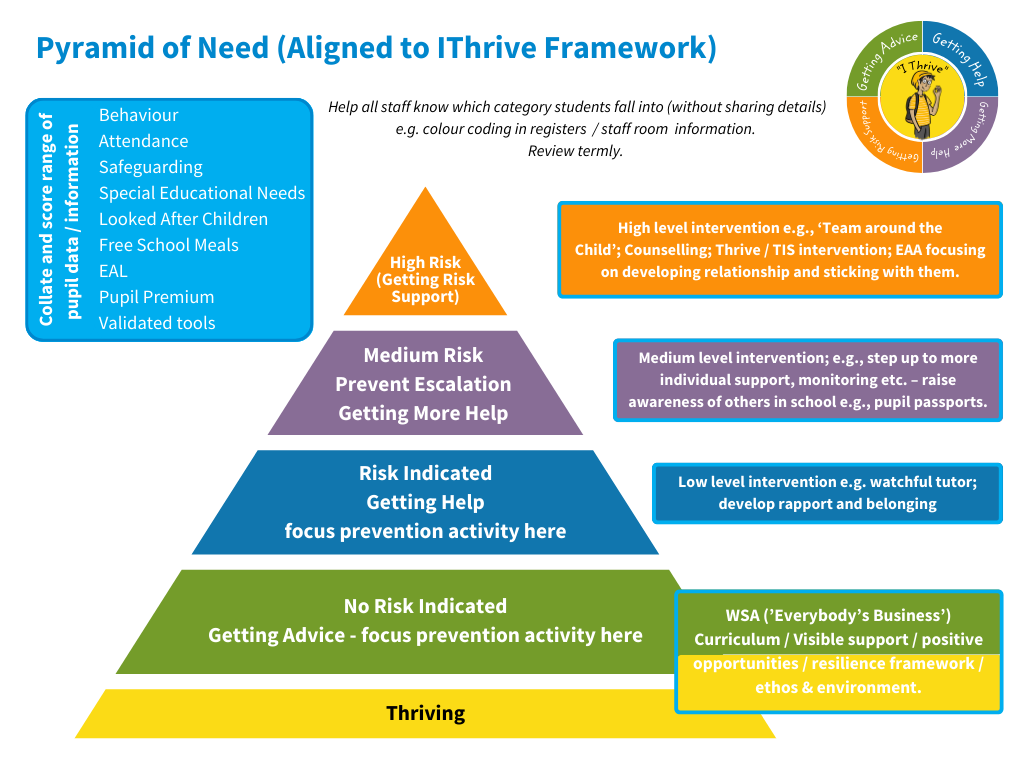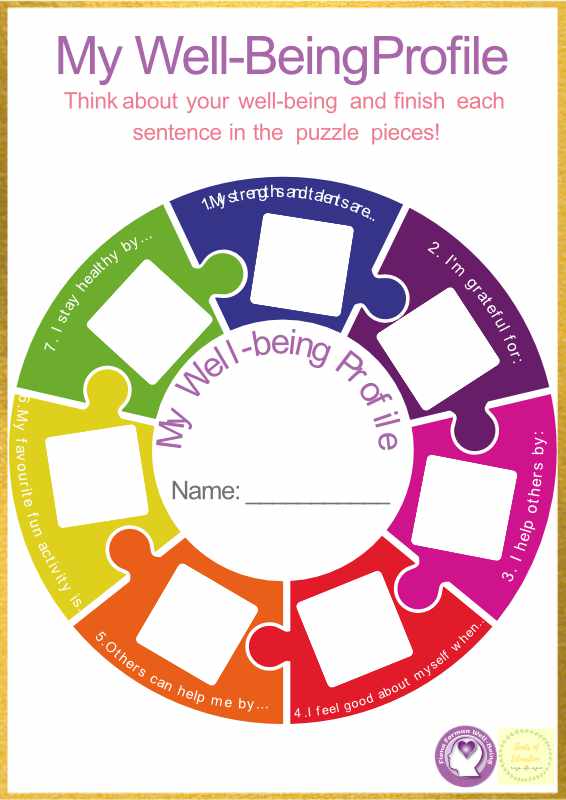Key question: How does the school or college assess the needs of students and the impact of interventions to improve wellbeing?
The school monitors the needs of students and monitors impact of wellbeing interventions by
- using appropriate validated tools (e.g. Boxall Profile, SHEU, WMF, PASS, Motional etc.)
- using tools like 'I wish my teacher knew...'
Six Litmus Tests (Pooky Knightsmith)
(4) We Recognise and Support Our Most Vulnerable Learners
Learners can be vulnerable for a whole range of reasons, I invite you to think about how you can recognise and support vulnerable learners in every shape and form. Sometimes it’s the students you least expect who most need some additional support.
I wish my teacher knew...
"I wish my teacher knew..." provides an opportunity for children or young people in schools to tell you anything, however big or small, which they would like you to know about them. Famously shared by Kyle Scwartz, a teacher in America, (Ted Talk 13 mins) the results of asking her class the question opened her eyes to the need for educators to understand the unique realities their students face in order to create an open, safe and supportive place in the classroom. The exercise brought attention to student needs often hidden beneath the surface.
Kyle Schwartz has written about "I wish my teacher knew..." - which provides a more in-depth and nuanced introduction to using "I wish my teacher knew..." I Wish My Teacher Knew: How One Question Can Change Everything for Our Kids by Kyle Schwartz
"I save “I Wish My Teacher Knew” for times I notice students uniquely struggling in areas like motivation, relationships, following directions, or focus. When the hustle and bustle of teaching distracts me from the fact that the nine-year-olds in front of me have lives, responsibilities, and emotional experiences beyond the academic learning objectives I place before them, I know it is time to bring out “I Wish My Teacher Knew.” For me, it brings humanity back to the students in my classroom community at times when I am preoccupied with the checklists of school tasks to be accomplished. “I Wish My Teacher Knew” is my ever-relevant reminder that all behavior is communication and, when times get tough, students are trying to tell me something deeper than even my sharp teacher eyes can see". (from an article by Sylvia Denice)
A note of caution
Here is a thoughtful article asking us to pause and think about possible unintended consequences of asking the question and things to think about before undertaking "I wish my teacher knew..."
Pyramid of Need
Created as part of the Academic Resilience Approach (Boingboing / Young Minds) adapted by HSK and aligned to IThrive Framework and using information / data about a student to understand vulnerabilities and support needs. Click on image to download pdf.
My Wellbeing Profile
My Wellbeing Profile pdf - a quick getting to know you activity for C&YP - great for transitions, new child joining a class etc.
Wellbeing Measurement Tools
To support the understanding need and monitoring impact area of the WSA, wellbeing measurement tools can provide a useful insight into the wellbeing of students.
Right On C&YP Survey - Spring 2025
The Right On Survey 2025 has been launched and registration is now open to all education settings in Cornwall. The survey supports children’s rights, providing an important opportunity for young people to have their voices heard and influence decision making...
Reading and resources
- Measuring Wellbeing in Schools - An excellent blog from What Works Wellbeing. The blog introduces recent work on children and young people’s subjective wellbeing and marks the publication of a comprehensive bank of measures of children’s wellbeing. It is a massive peice of work and a rather daunting excel spreadsheet! but if you want to check out a specific measure you can look it up. It is accompanied by a very useful user guide. (worth reading to find about more about best practice in undertaking wellbieng measurement).
- Using measurement tools to understand pupils’ mental health needs:a guide for schools and colleges Anna Freud National Centre for Children and Families (pdf)
- Measuring and monitoring children and young people’s mental wellbeing: A toolkit for schools and colleges Anna Freud National Centre for Children and Families et al (pdf)
- CORC have an excellent online resource with links and details of a huge number of questionnaires / surveys although not all suitable for school / general use. A good exampleof of one that can be used is the Me & My Feelings (M&MF) measure, sometimes referred to as Me & My School, is a brief 16 item school-based measure of child mental health, covering two broad domains: emotional difficulties and behavioural difficulties. (see the next section on free resources too).
- Tools for gathering the views of children and young people (pdf) Originally written for use by educational psychologist and others supporting C&YP with additional needs. There are some excellent ideas / activities. Well worth a look, especially if you are looking for something to use for a specific child.
- A guide to measuring children’s well-being (PDF) - Action for Children / New Economics Foundation. The guide gives a quick overview of the benefits and the scope of subjective well-being indicators to shape and improve measurement tools for the future.
- DfE’s ‘State of the nation 2022: children and young people’s wellbeing’ report
Free tools
CORC (part of the work of the Anna Freud Centre) have launched a suite of free Wellbeing Measurement for Schools (WMfS) resources. These have been developed to support schools to design their own questionnaires and surveys to understand more about the wellbeing of the pupils in their schools.
The resources include tried and tested sets of questions covering five broad areas of wellbeing, each with various questionnaires to choose from, and a comprehensive step-by-step guide and additional resources. The five areas are:
Please visit our Measuring pupil wellbeing pages to download these new modular surveys and our step-by-step guides. These resources sit in the schools section on our website, which has been refreshed over the summer, and now features:
- Measuring staff wellbeing
- Support for schools
- Measuring wellbeing in colleges
- Measuring wellbeing in the early years
Wellbeing Questionnaire a simple too available free to download from the excellent ELSA Support website suitable for primary / secondary.
The Good Childhood Index is the index of subjective well-being for children aged eight and over. It was created by the Children’s Society in 2010. They wanted to develop an index of children’s well-being that is statistically robust and covers the main aspects of children’s lives, including those identified by children themselves. Paper version. The short version is freely available to schools to use. (and user friendly) Upper KS2 up. We have created a simple online tool using the short version. Contact us for details.
Turnaround for Children - Wellbeing Index
Each student has unique strengths and needs that are dynamic and guide how they engage and learn. Educators informally try to assess how students are doing with quick chats in the hall or through the observation of behavior, and this may give educators some information – but it’s challenging to know exactly what’s happening with every student, every day. The Well-Being Index (WBI) is a tool designed to help educators collect holistic student data – physical, social, psychological and emotional well-being – systematically, directly, quickly and in real time. This is a wellbeing measurement tool created in the USA so the tools are designed for elementary / secondary settings. It is freely available (if you sign up to the site for free) and comes with user guides and scoring tools.
Measuring a sense of belonging
Online tools with cost
The Boxhall Profile is an online assessment tool for social emotional and behavioural difficulties for children and young people. Often used as part of Nurture provision in schools. Information booklet: The Boxall Profile For the assessment of children and young people’s social emotional wellbeing
Motional is an easy-to-use online tool for identifying, assessing, and improving the emotional health and wellbeing of children and young people. It can record ACE and Protective Factor scores where required and gives staff a whole-brain picture of students' mental health and wellbeing.
Pupil Attitudes to Self and School (PASS) help you to understand the whole pupil by screening for hidden issues of low self-esteem, barriers to learning, mental health and emotional difficulties.
Schools' Health Education Unit (SHEU) offer health and wellbeing questionnaires for young people in every phase of education, online or on paper. It covers physical health and mental wellbeing.
Wellbeing Measurement Framework In collaboration with colleagues from CORC, the University of Manchester and Common Room, EBPU have developed the Wellbeing Measurement Framework (WMF), a suite of measurement tools for primary school, secondary school and college students. Each WMF tool contains a set of validated questionnaires (tailored to each age group) that assess constructs such as positive wellbeing, behavioural or emotional difficulties, the presence and strength of protective factors such as perceived support at school, home and in the community, and ability to deal with stress and manage emotions. The WMF was used as the evaluation tool for Headstart areas across the Country yielding excellent and insightful results.
YP and the Wellbeing Measurement Framework in Cornwall
Bounce Together An online mental health and wellbeing survey platform designed for schools.
Explore the other Principles of a Whole School Approach
Leadership and management that supports and champions efforts to promote emotional health and wellbeing
Leadership and management that supports and champions efforts to promote emotional health and wellbeing
An ethos and environment that promotes respect and values diversity
An ethos and environment that promotes respect and values diversity
Curriculum, teaching and learning to promote resilience and support social and emotional learning
Curriculum, teaching and learning to promote resilience and support social and emotional learning
Enabling student voice to influence decisions
Enabling student voice to influence decisions
Staff development to support their own wellbeing and that of students
Staff development to support their own wellbeing and that of students
Identify need and monitoring impact of interventions
Identify need and monitoring impact of interventions
Working with parents/carers
Working with parents/carers
Targeted support and appropriate referral
Targeted support and appropriate referral



